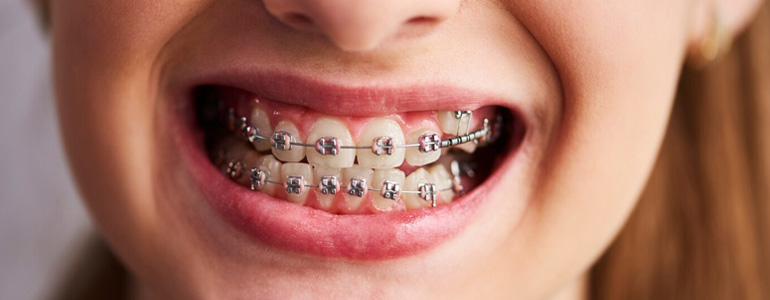Braces

A metal or ceramic dental base is affixed to each tooth, and a dental wire is inserted through each base. A dentist can gradually train the teeth into proper alignment by regularly adjusting the wire. When the desired results are achieved, the fixed dental braces are completely removed.
Common types of braces
- Metal braces are the traditional type of braces and can be used to correct most dental problems.
- Ceramic braces are exactly the same as metal braces but less noticeable. The brackets can be clear or tooth-colored while the wires are far less noticeable.
- Self-ligating braces are capable of correcting certain complex malocclusion (misaligned bite) issues and may be a viable option for patients with unique circumstances
- Lingual braces are attached to the back surface of the teeth so they are virtually unnoticeable. They can irritate the tongue and it takes a bit more effort to keep them clean.
Care with braces
It generally takes more time and effort to maintain your oral health while wearing braces. The nature of braces means they often trap food that must be cleaned out carefully and diligently. You'll need to brush, floss your teeth, and use mouthwash after every meal or snack. Use a small bendable floss brush to clean between and around wires or it may be worthwhile to purchase a water flosser that cleans using a pressurized stream of water.



